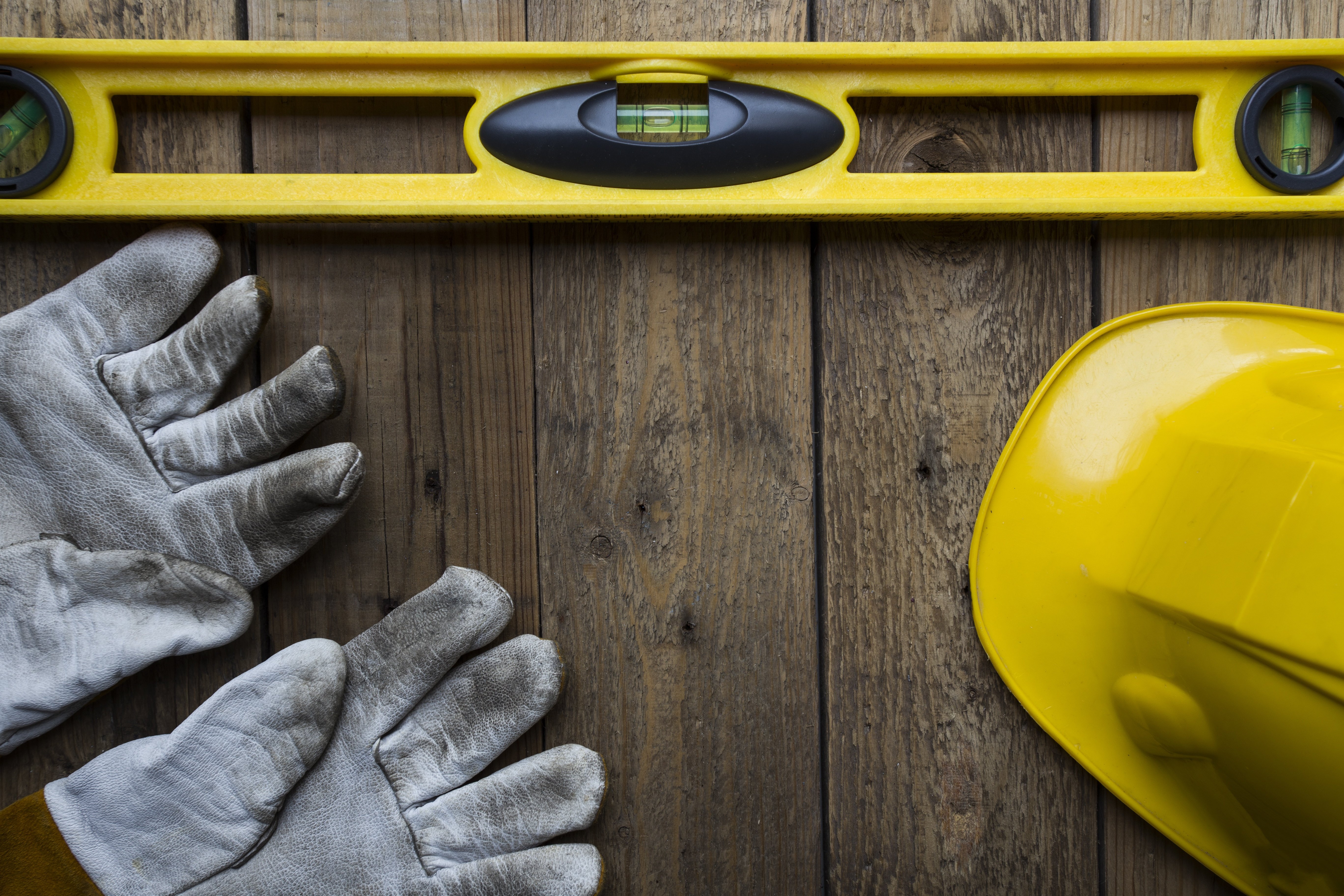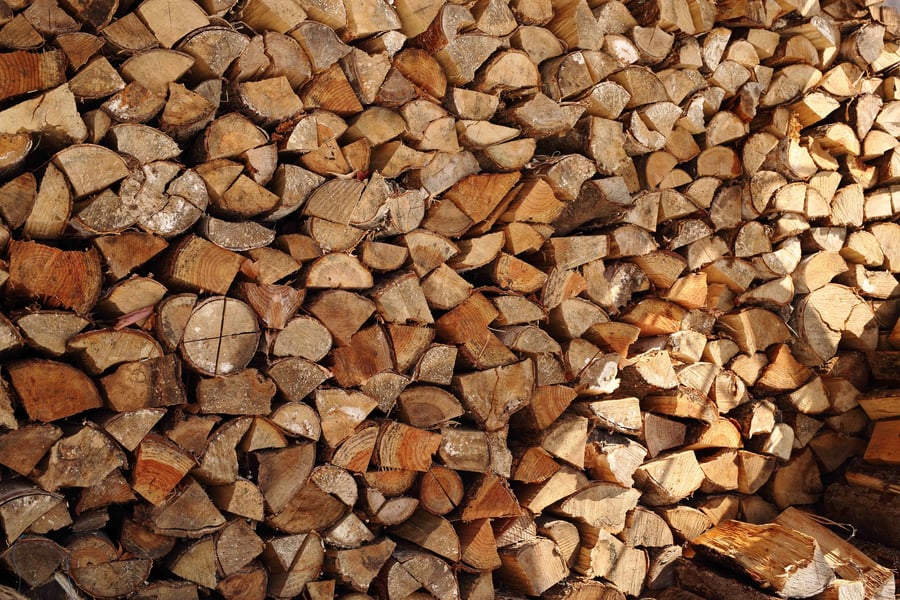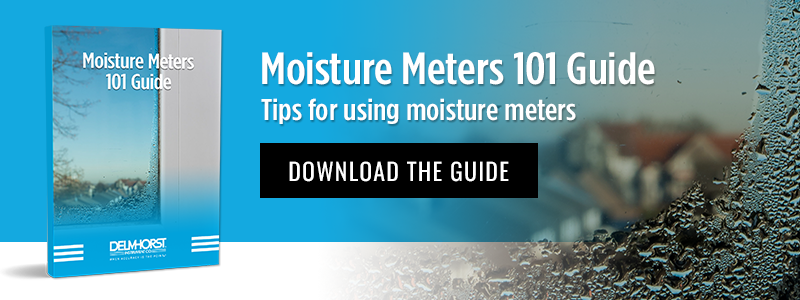Rx #6: MOISTURE METER CHOICES

There are two types of moisture meters used with lumber. One uses pins or needles that are inserted into the piece of wood being tested; the other does not have pins but has a plate that must be in good contact the wood. Which meter is best? There are two answers:
- It depends on what information you are looking for, such as moisture gradients; and
- The meter must be one that your employees will use.
Pin Meters
With the pin meter, the electrical resistance between the pins, which are driven into the wood, is measured. The resistance value is then converted into an estimated moisture content (MC). The theory is that the electrical resistance of wood is affected primarily by the amount of water in the wood. However, each species has a slightly different inherent resistance, so the name of the species being tested must be known and then the MC reading adjusted for species. (Traditionally, American-made moisture meters have their basic calibration based on Douglas-fir; non-American meters have used many different standards).
Furthermore, temperature also has a slight effect; for every 20˚F wood is warmer than room temperature, 1% MC is subtracted from the reading; and for every 20˚F cooler it is, 1% MC is added. I did a test on several hundred pieces of kiln-dried lumber at room temperature of various species using two common USA-made pin-type meters and the results were typically within 0.5% MC of the oven-dry MC that I subsequently measured (see details on page 130 of Drying Hardwood Lumber).
If the pins used are insulated along their length except for the tip, then the MC reading obtained will be the MC in the vicinity of the tip. It is possible with this pin meter, therefore, to obtain the MC at different depths. That is, the MC gradient within a piece of wood can be measured.
The practical range for pin meters is 6.5% MC to 28% MC. Some meters may provide MC values outside this range, but the reliability of such readings is poor. This uncertainty at low MCs is due to the extremely high electrical resistance wood has at low MCs; the uncertainty at high MCs is due to the small resistance changes above 28% MC.
Perhaps the greatest concerns with using pin meters are the time it takes to drive the needles into the wood and the two small holes that the pins leave. Furthermore, the MC measured is only the MC in the vicinity of the pins, which leaves most of the piece of the lumber unmeasured… though this is seldom a problem with properly dried lumber.
Some pin meters require the pin to run along the grain; others, across the grain. Most pin meters suggest that the reading be taken immediately after the reading button is pushed.
Pin-Less Meters
With the pin-less meter, a dielectric factor in the wood is measured and the results are converted to an estimated MC value. Although moisture is the greatest factor influencing the value of the dielectric coefficient in wood, the density of wood is also important. Therefore, even with the same species, if there is a density variation within the wood, there will be a similar variation in the indicated MC—even though the true MC does not vary. The practical range for these meters is 5% MC to 28% MC.
The main advantage of the pin-less meters is their speed (readings are almost instantaneous); so, every piece of wood in a load can be measured for MC quickly. Furthermore, these meters can scan an entire piece (end to end and side to side) if the meter is moved across the lumber’s surface. The readings are not influenced much by temperature.
One drawback is that gradient readings cannot be taken. The meter also responds slightly more heavily to the MC on the surface closest to the meter. Because of the density issue mentioned above, whenever high MC readings are seen with the pin-less meter, it would be prudent to double check the MCs with a pin-type meter to assure that the MC is actually high.
In tests on hundreds of kiln dried lumber samples at room temperature, the MC readings were typically within 0.75% MC (See page 130 in Drying Hardwood Lumber).
It should be noted that pinless meters are designed for materials of a certain thickness. Also, the piece being tested should have an air gap on the other side.
Which Meter Is Best?
Both types of meters have several strong features and limitations that a user must be aware of. The best meter is actually both of them used together, as the weakness of one is a strong point of the other. I like the pin-less meter for its ability to scan large areas and many pieces quickly and the lack of temperature sensitivity. I like the pin meter for its gradient ability and small species effect. I like “Made in America” moisture meters for rapid repair/replacement, if needed, plus calibration accuracy for American wood species.
Once you have chosen the type of meter, then consider what special features you want, such as a memory, ability to attach a probe for selecting kiln samples, attachment of a probe with insulated needles, automatic calculation of average MC and the standard deviation; easy species adjustment and easy temperature adjustment. You may also want a lighted dial. The needs of your quality control people should also be considered.
In all cases, the manufacturer’s instructions must be followed if accurate readings will be obtained. Several key items are mentioned above, but check the instruction manual for details. Also, fresh batteries must be used always; keep a readily available supply.
Rx is from The Wood Doctor, Gene Wengert, President, The Wood Doctor’s Rx LLC
The team here at Delmhorst would like to thank The Wood Doctor for sharing his blog articles with us. If you have any questions about how to use moisture meters, or how to pick the best ones, please contact us.
Subscribe to Our Blog
Post Related

Rx #3: MEASURING MC WHEN UNLOADING A KILN
.jpeg?width=900&name=20210503_AG_0334%20(1).jpeg)

